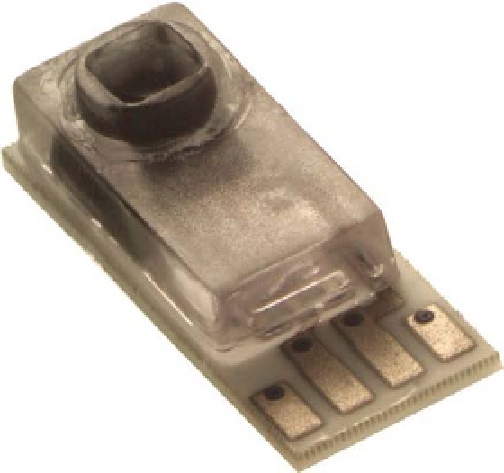Biomedical Engineering Reference
In-Depth Information
Microelectromechanical System Transducers
Microelectromechanical system (MEMS) transducers are fabricated using solid-state
micromachining techniques commonly used by the semiconductor industry in the produc-
tion of integrated circuits. A pressure sensor based on MEMS technology is based on the
deflection of a micromachined silicon diaphragm mounted on a piezoresistive transducer
that changes its output voltage with corresponding variations in the applied pressure. Com-
mon commercial applications of MEMS sensors include automobile airbag restraints and
fuel injection systems.
To date, the biggest success in medical MEMS technology is the development as a dis-
posable transducer for use in invasive blood pressure monitoring (Figure 10.18). The MEMS
transducer measures blood pressure through a silicon-based dielectric gel applied between
the sensor element and the saline solution filling the intravascular catheter. The function of
the gel is to protect the sensitive electrical circuitry by providing electrical isolation between
the MEMS sensor and the saline solution.
MEMS-based medical sensors are used, for example, in intrauterine pressure measure-
ment to monitor contractions during delivery, automatic noninvasive blood pressure cuffs,
respiratory monitors, infusion pumps, and kidney dialysis machines. MEMS transducers
are also used as accelerometers in implantable pacemakers to monitor body motion to
determine patient exertion level and suitably adjust the pacing rate to match changes in
metabolic demand.
10.3.2 Airflow Transducers
One of the most common airflow transducers is the Fleish pneumotachometer, shown in
Figure 10.19. The device consists of a straight short-tube section with a fixed screen
FIGURE 10.18
An MEMS pressure transducer.
Courtesy of Measurement Specialties, Inc.


